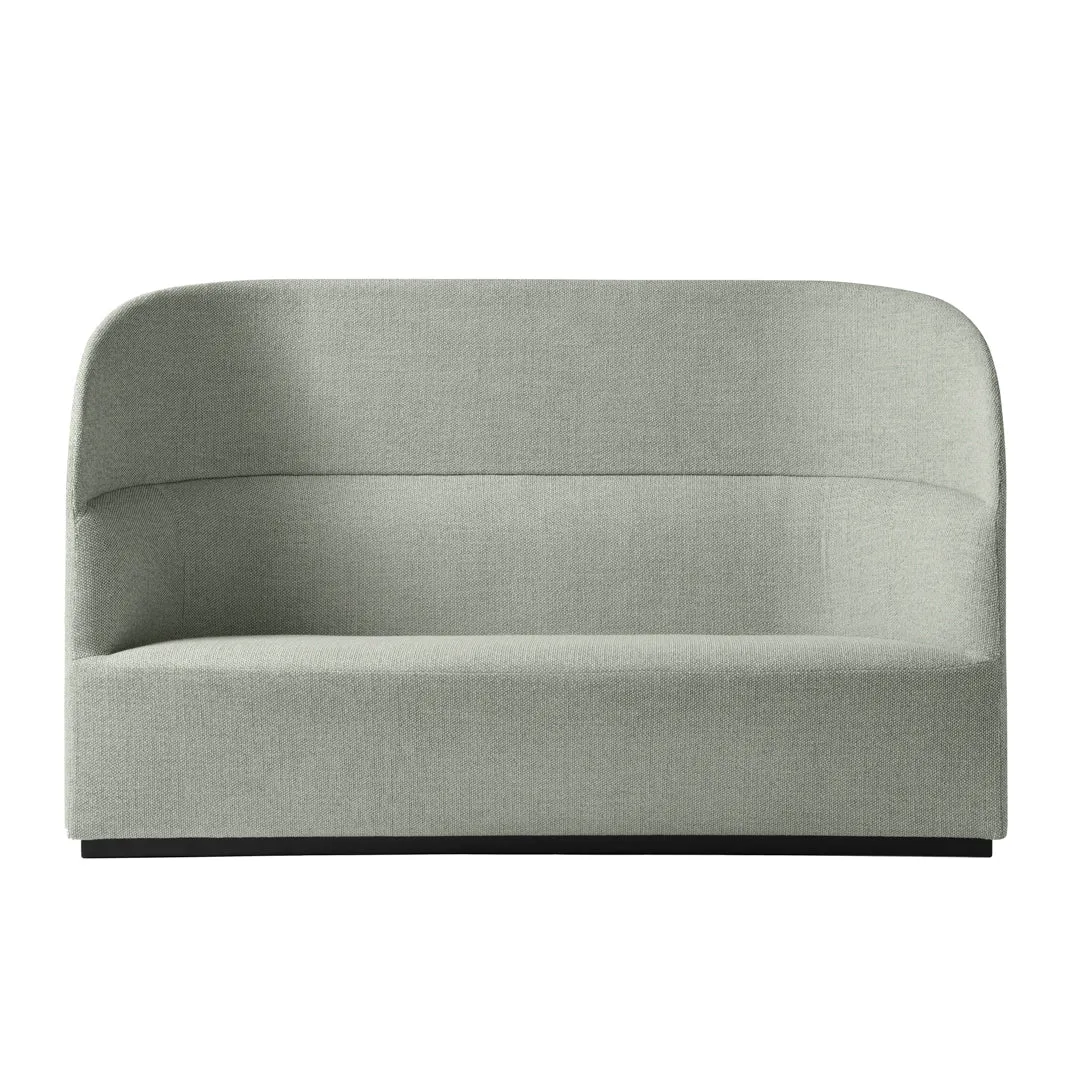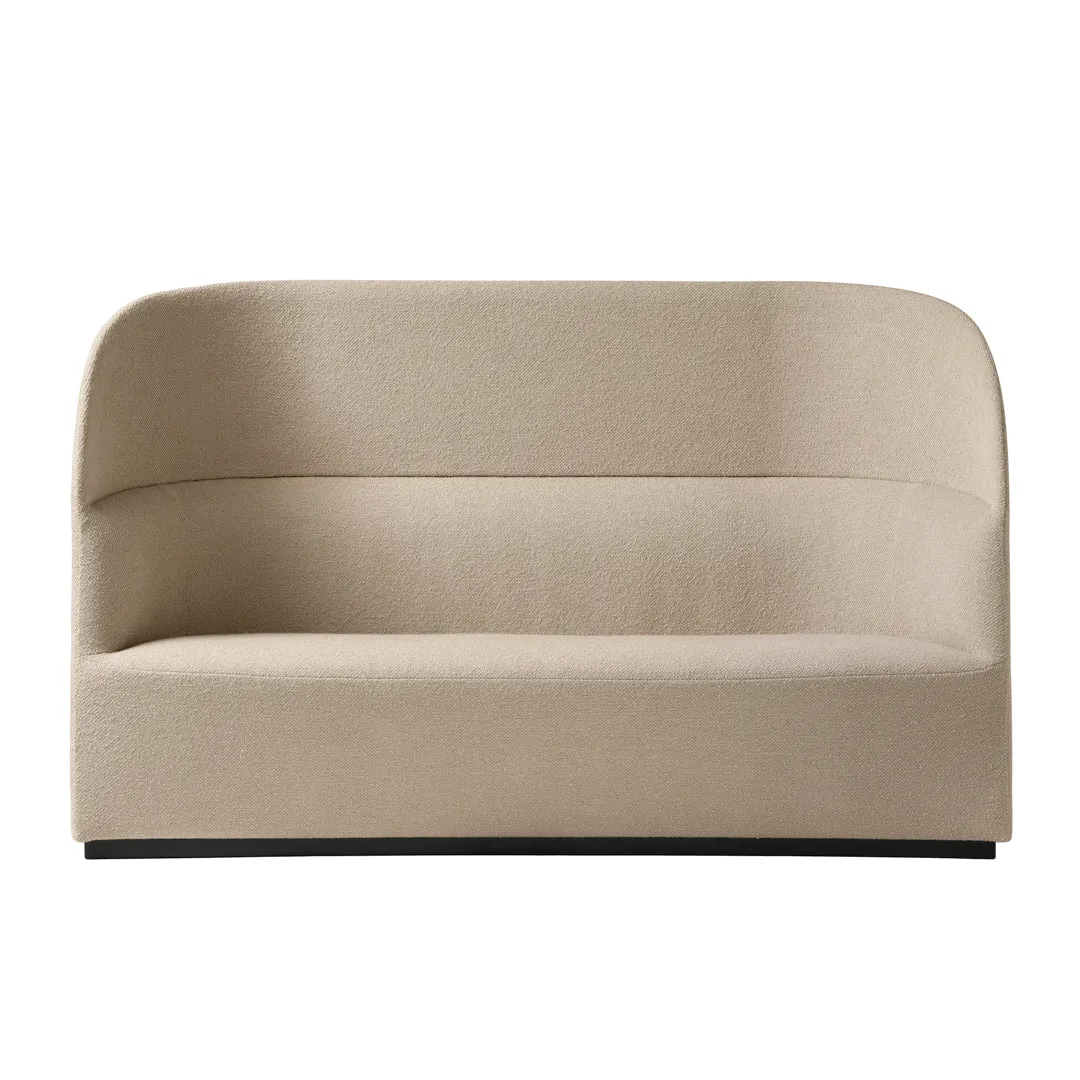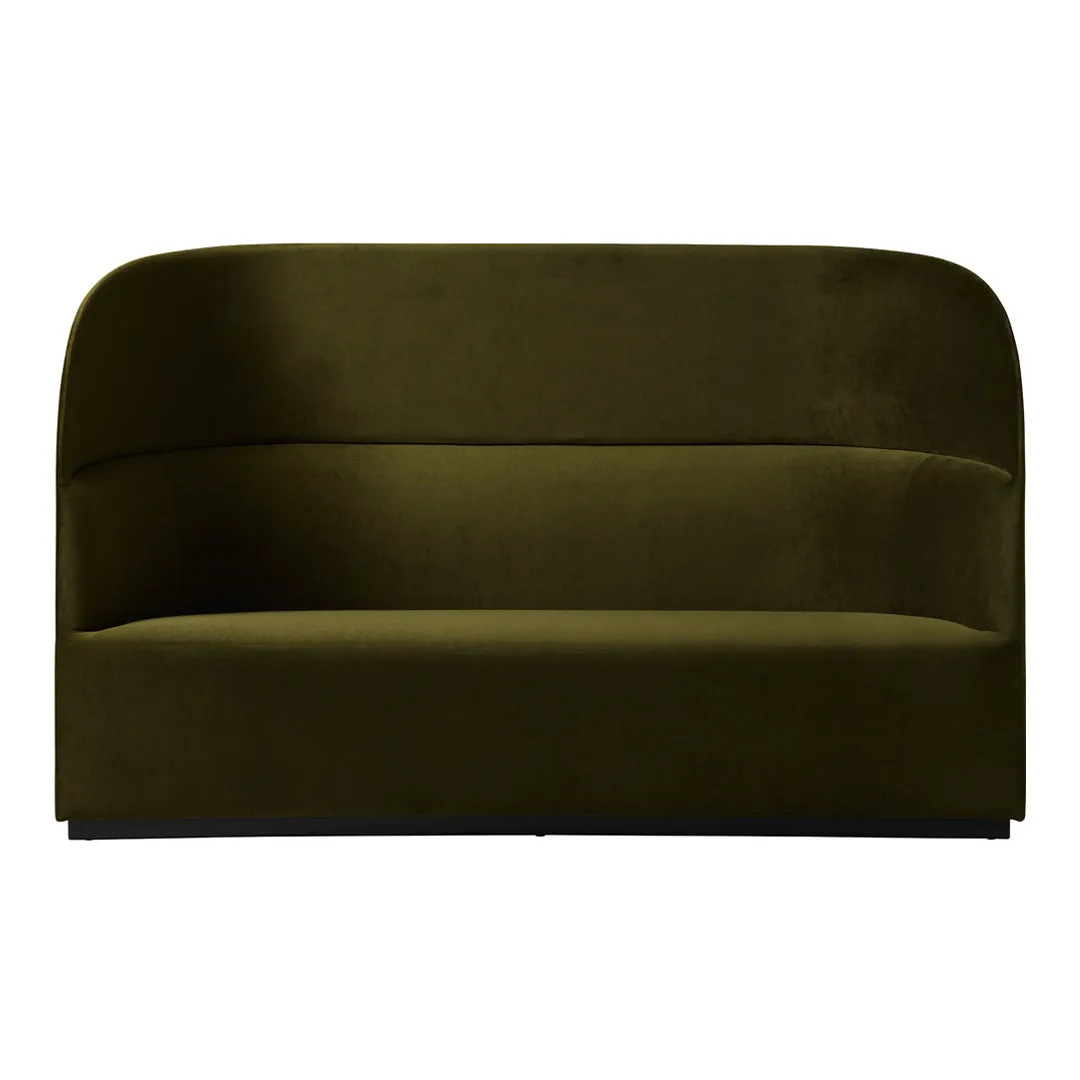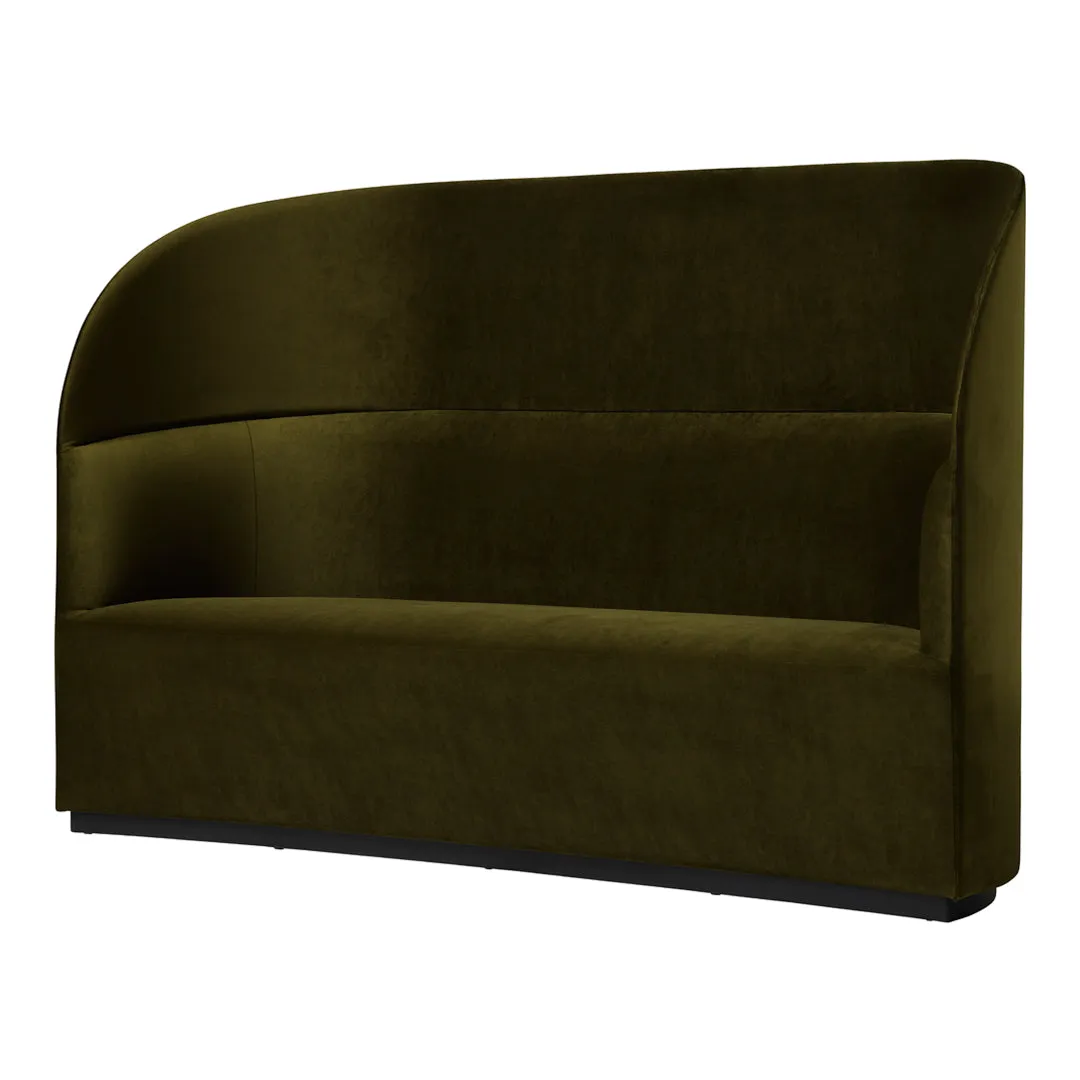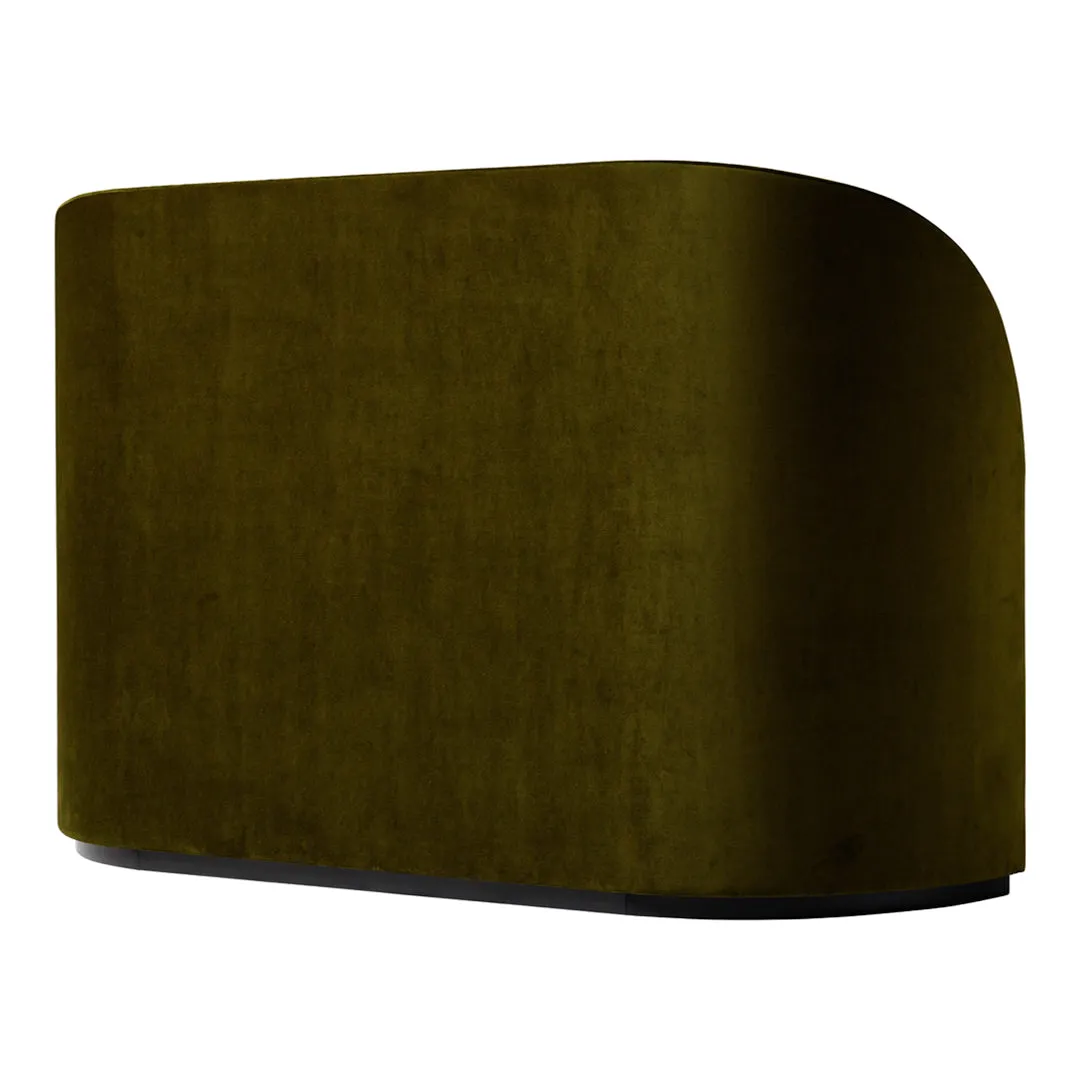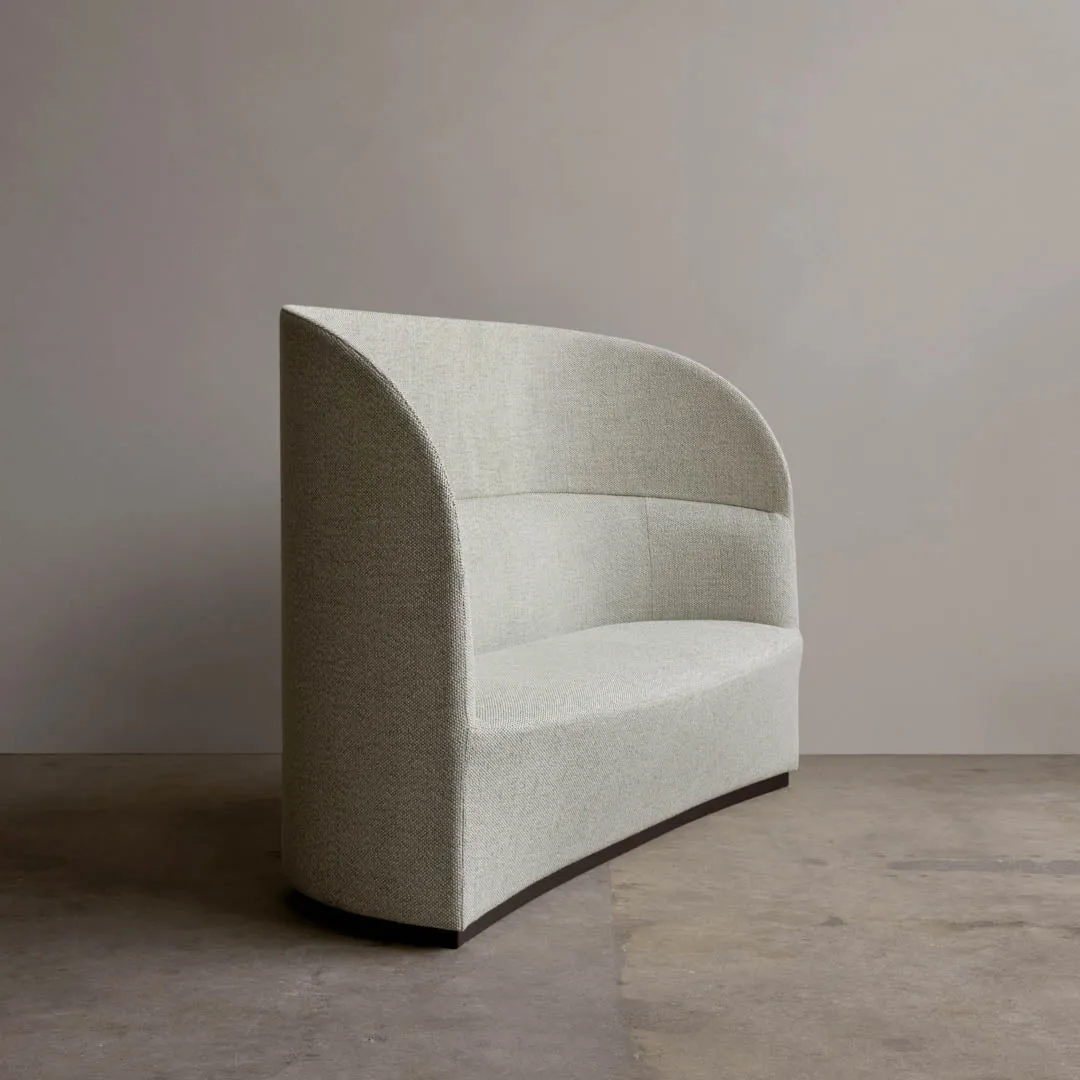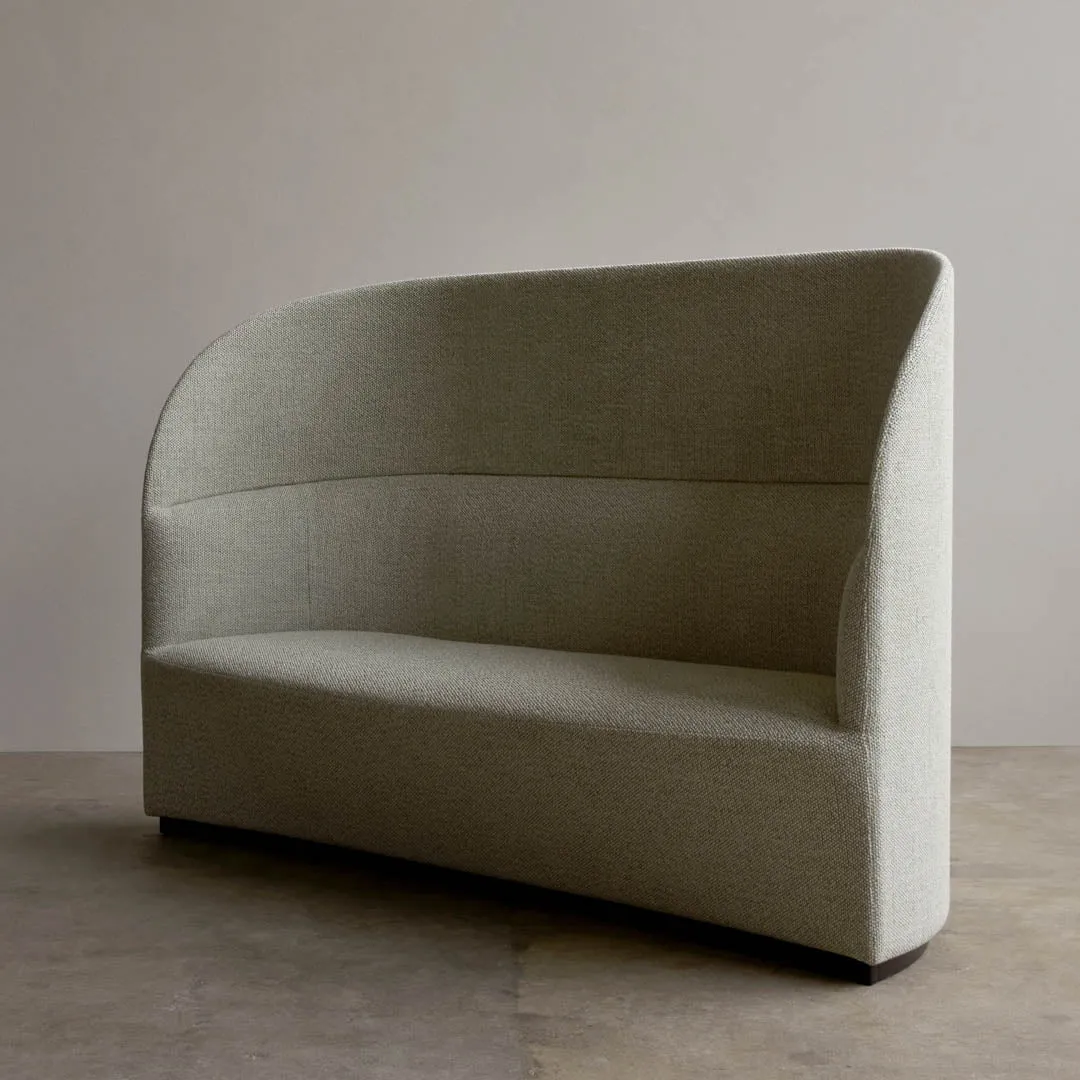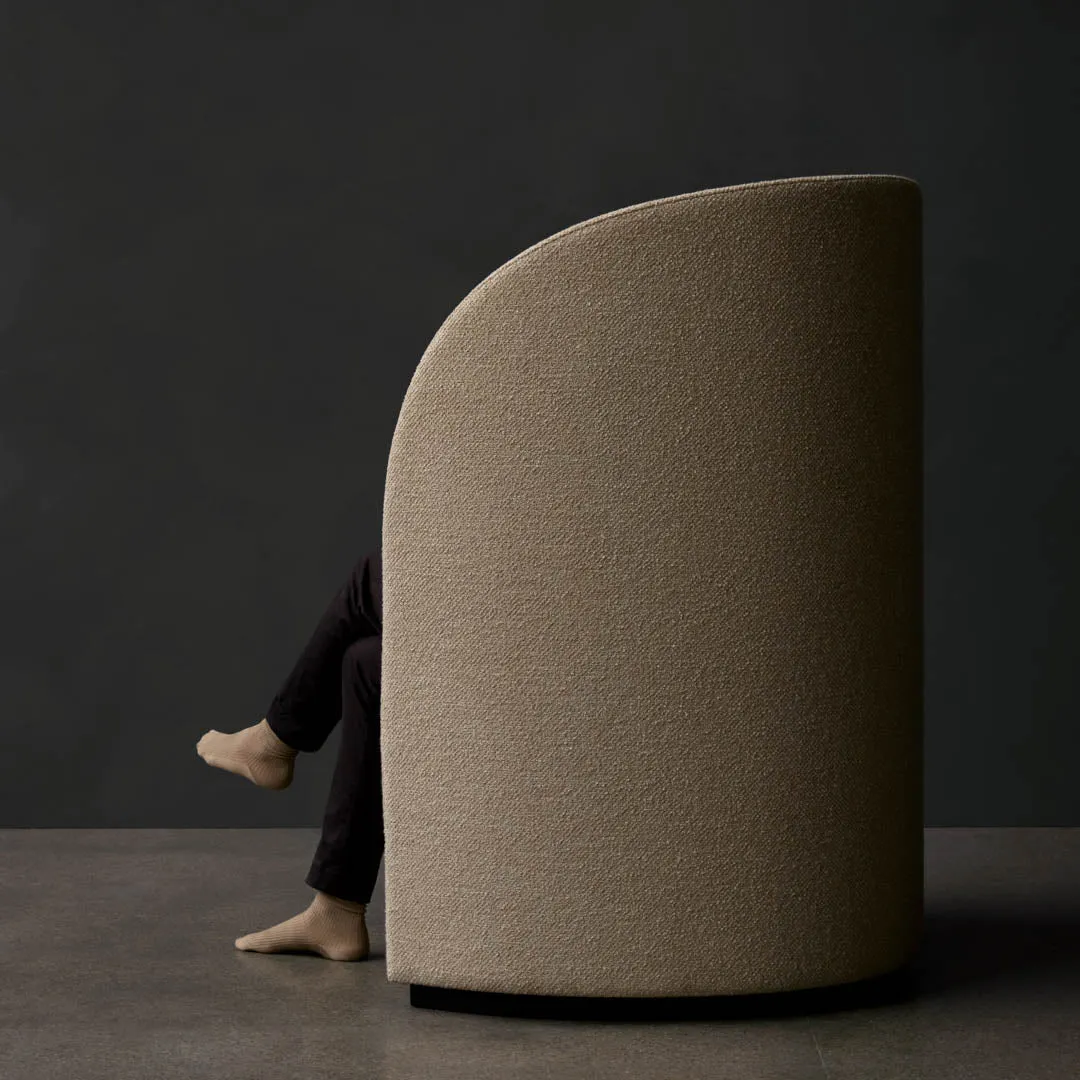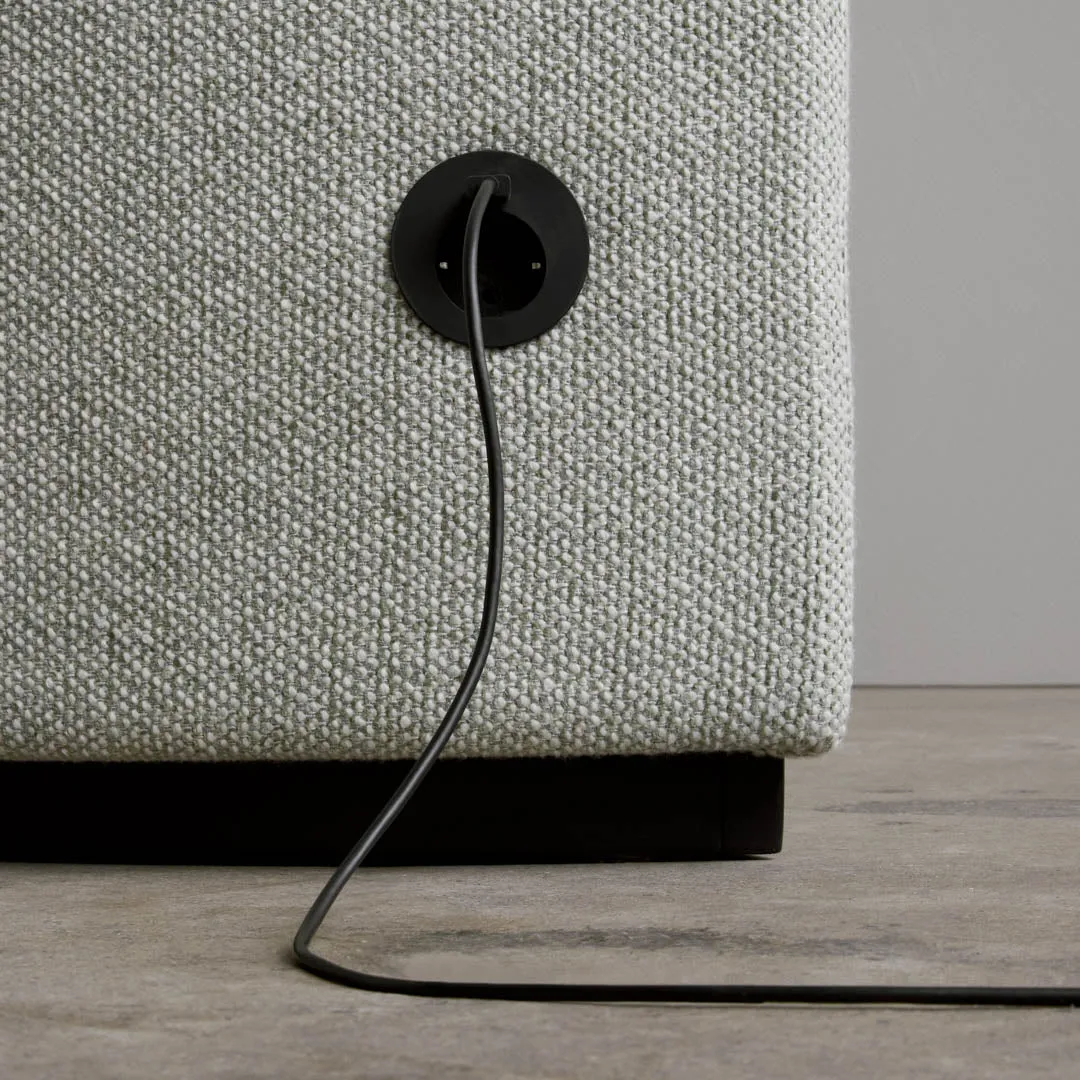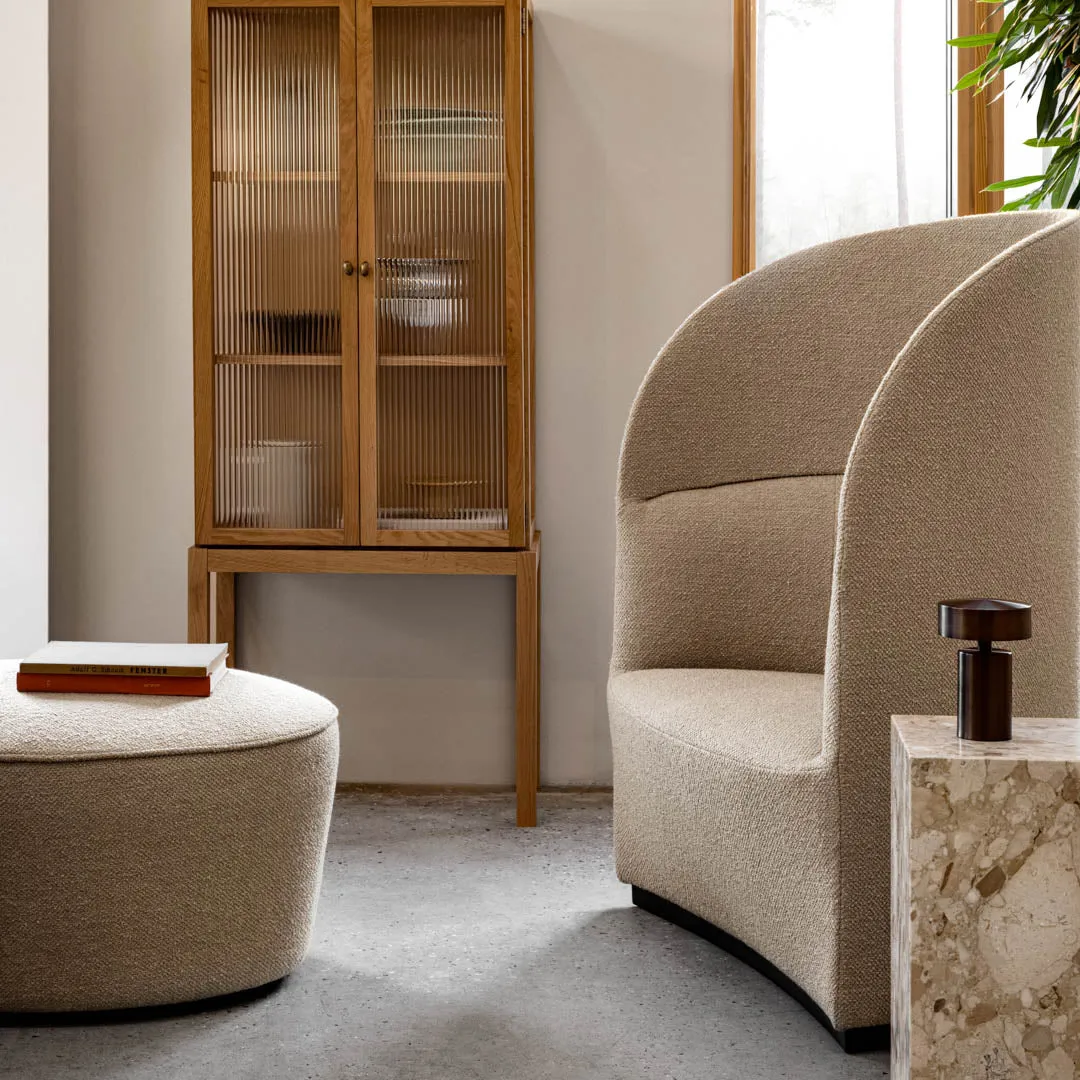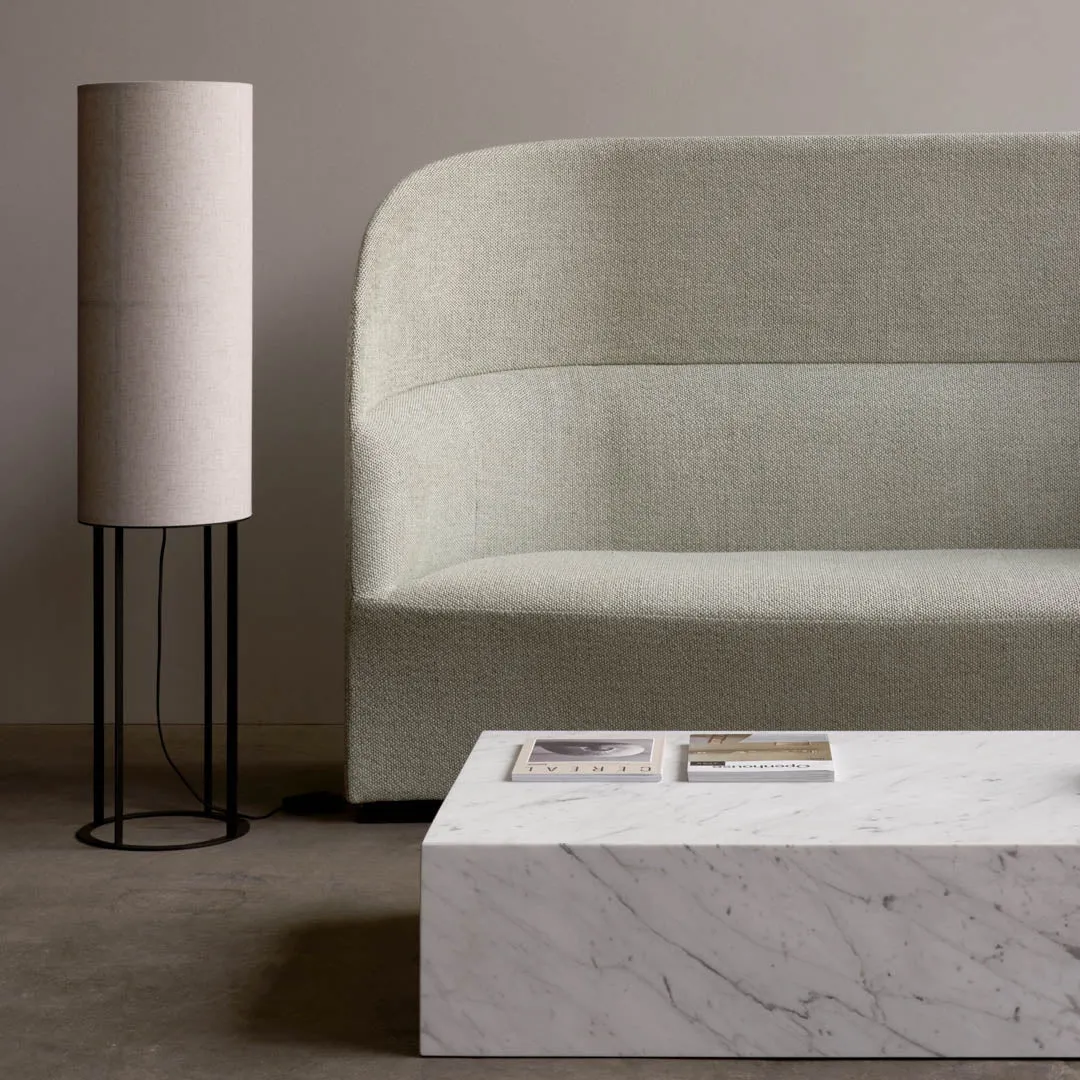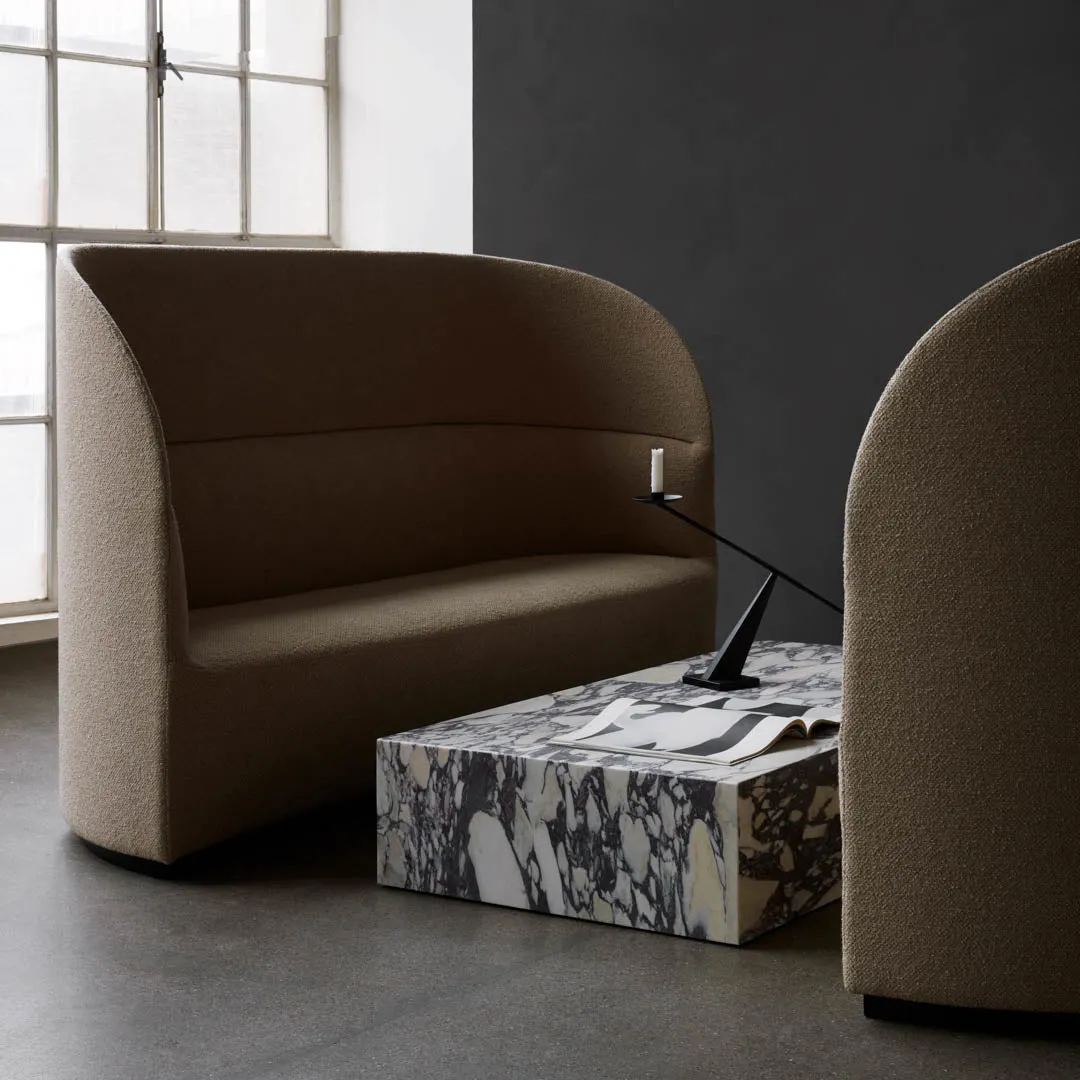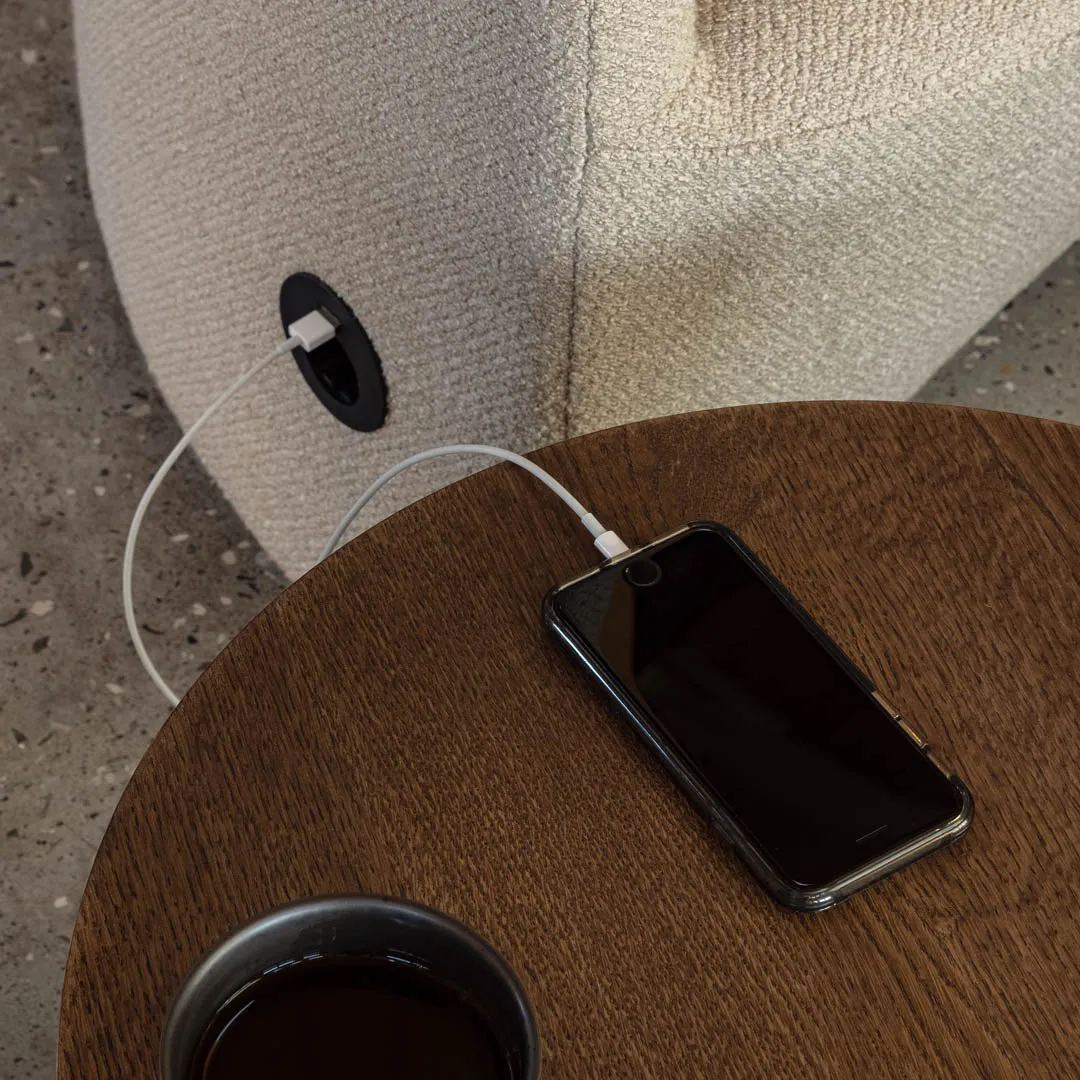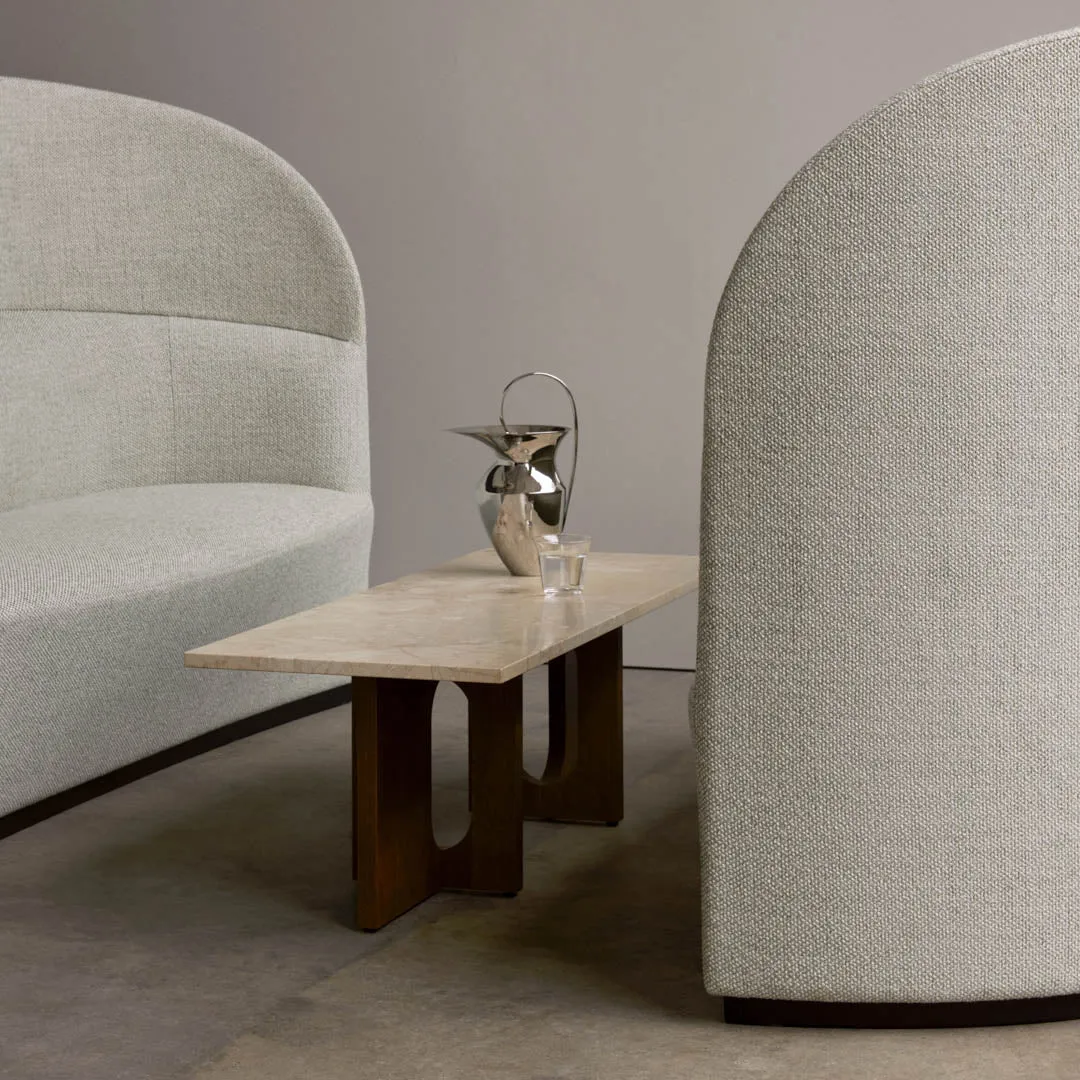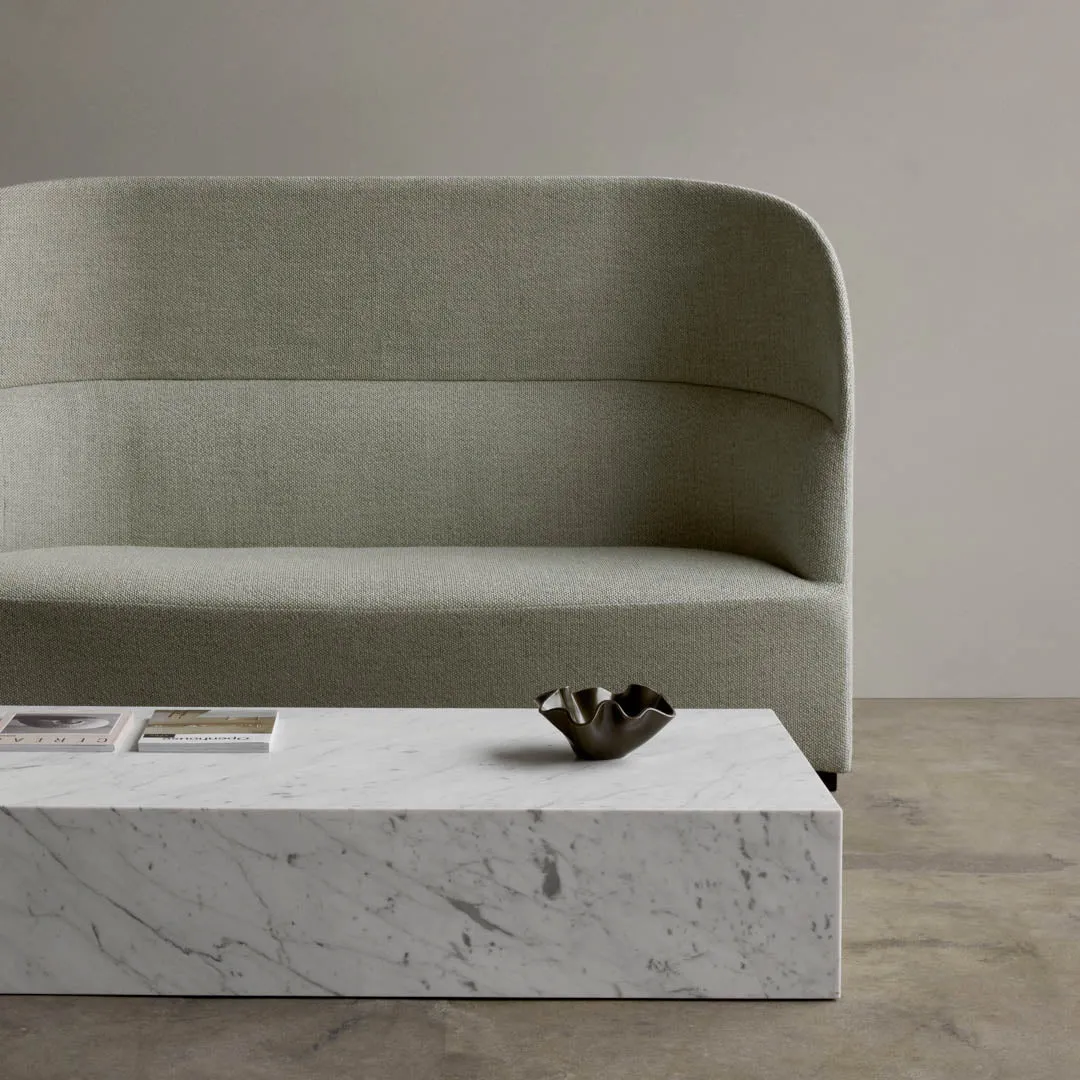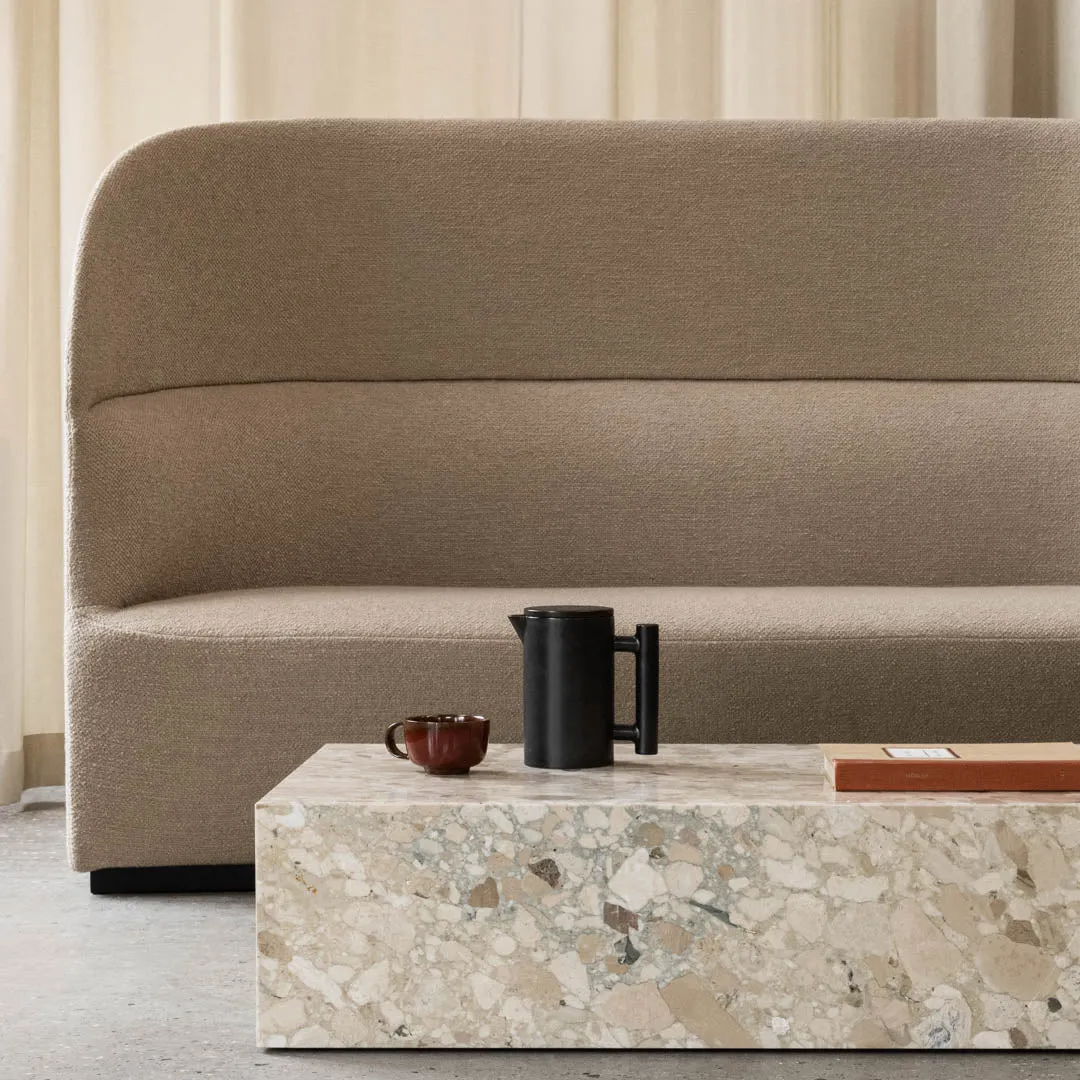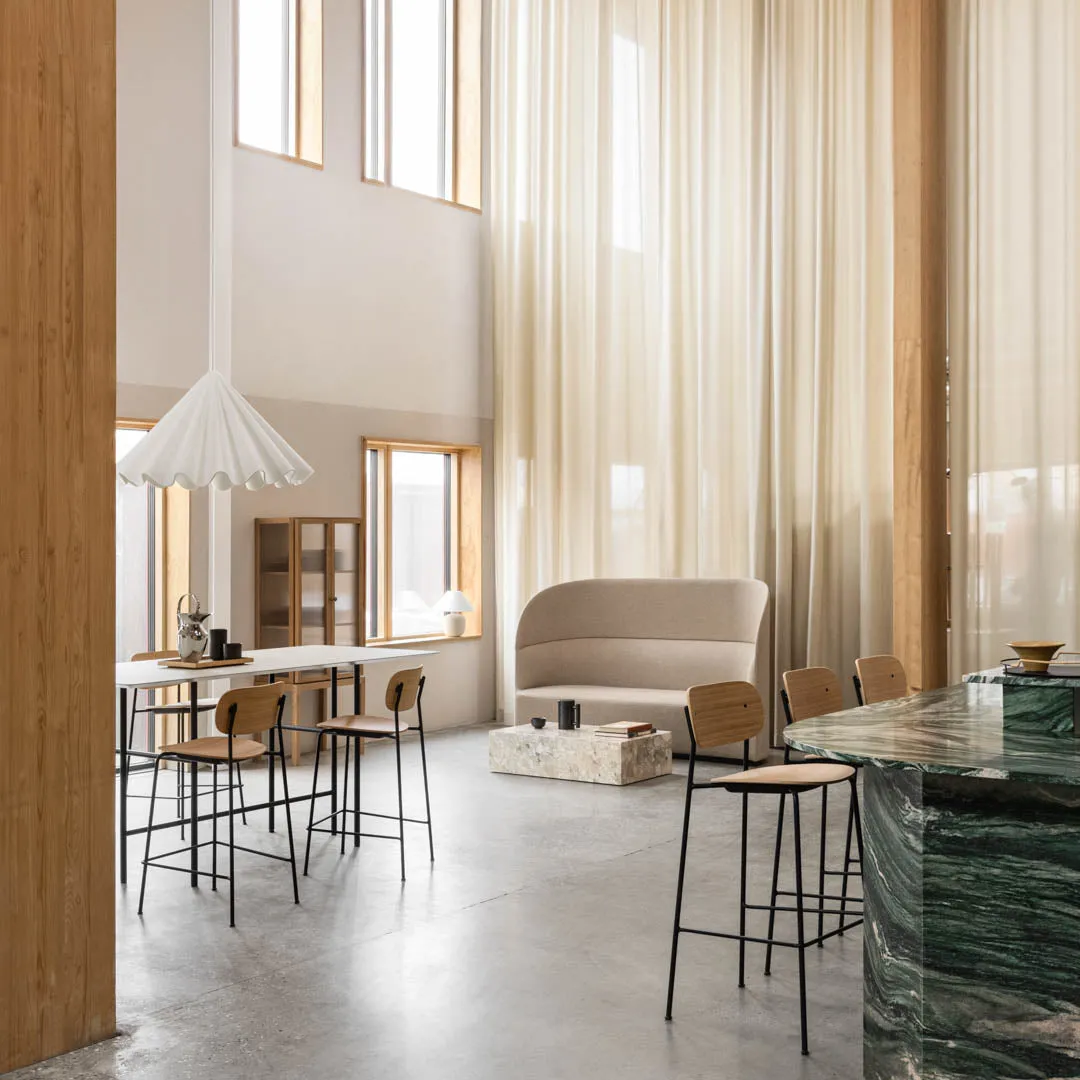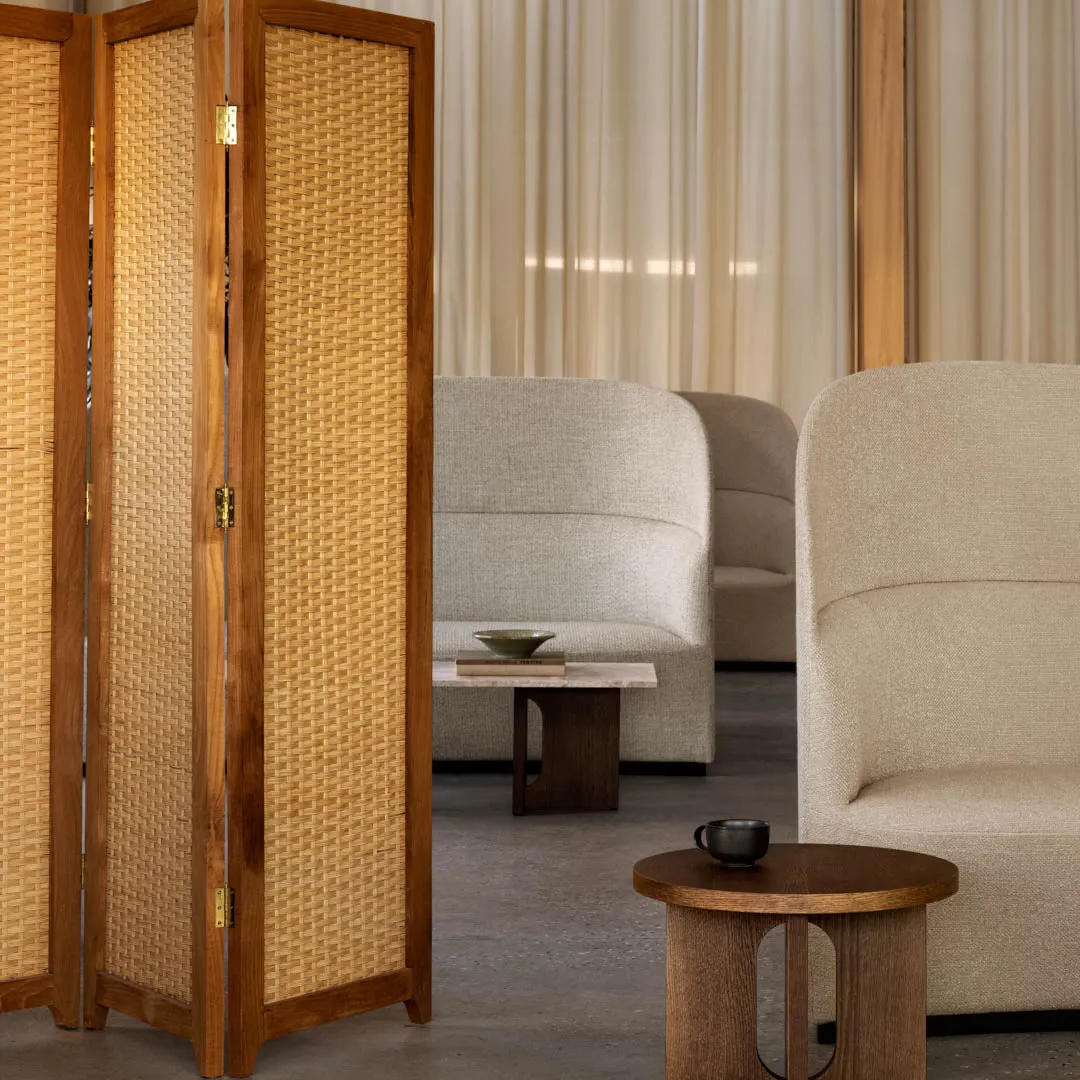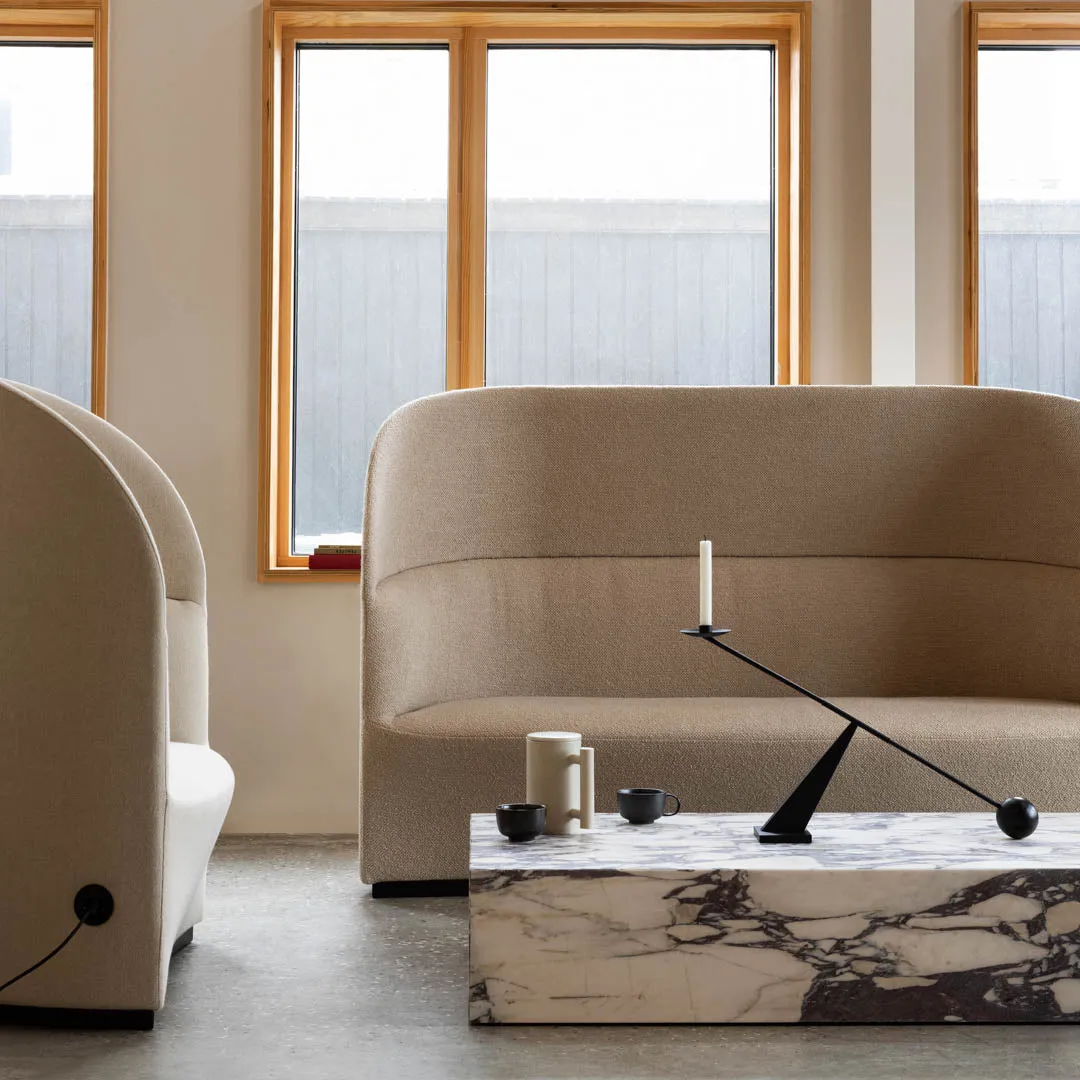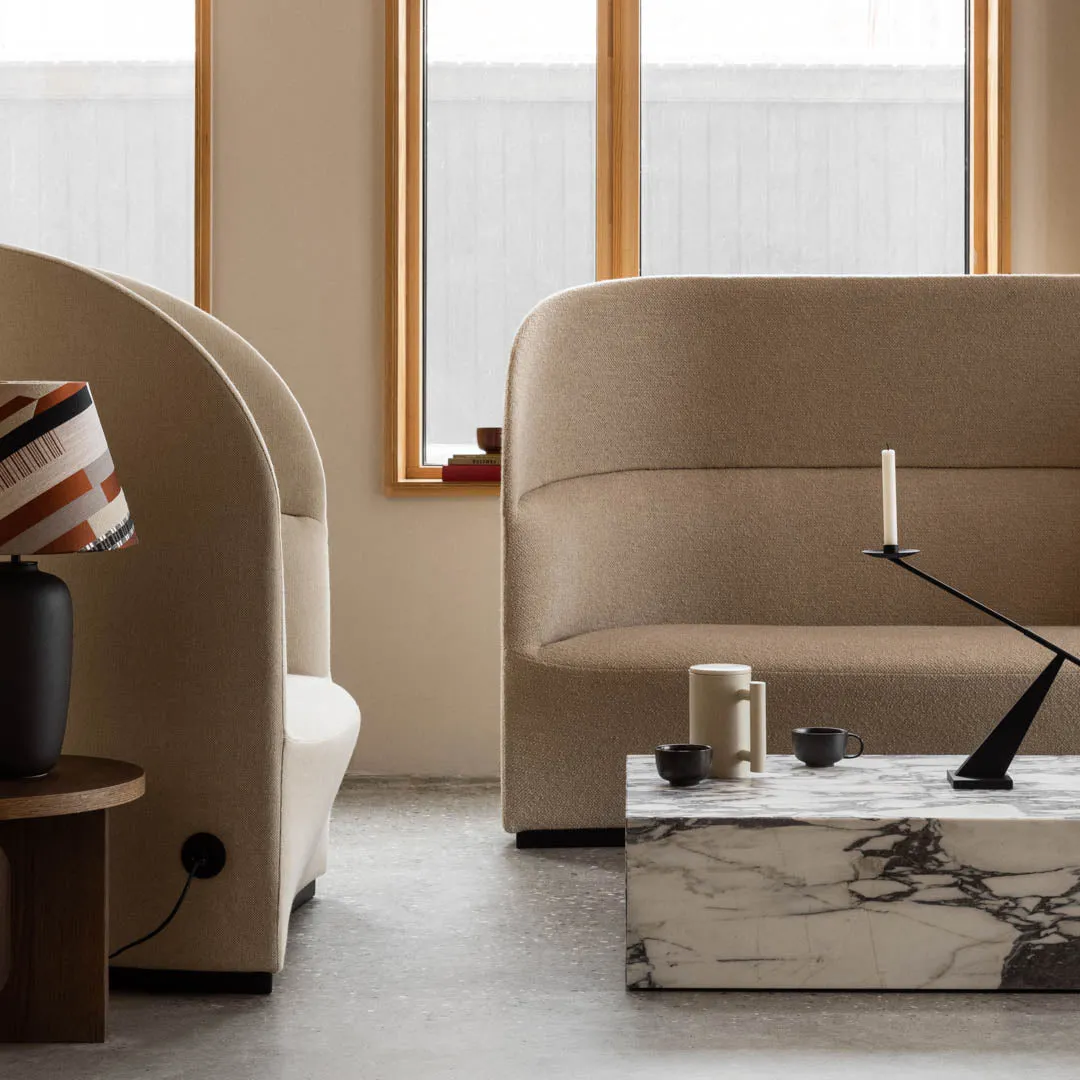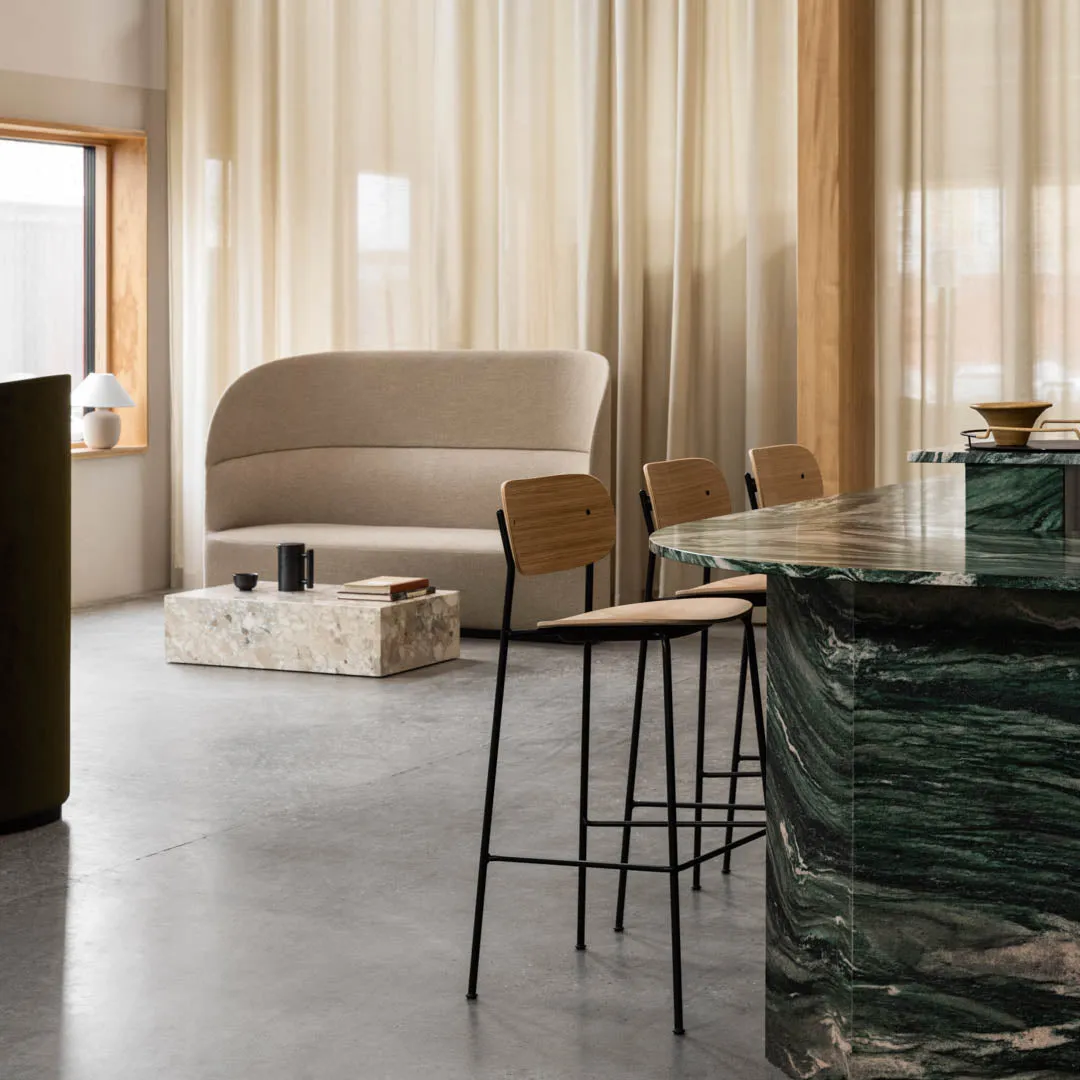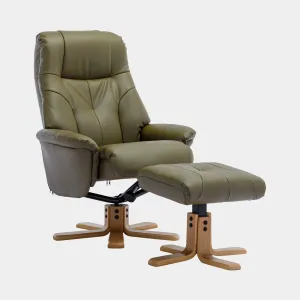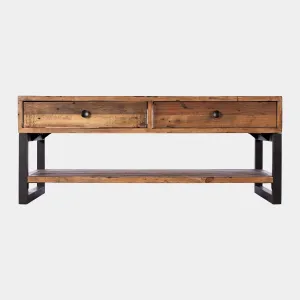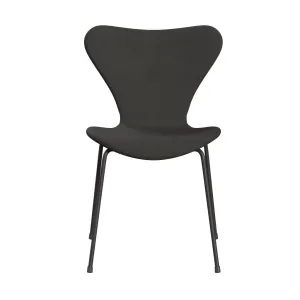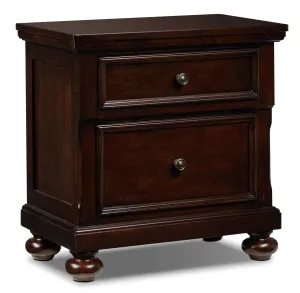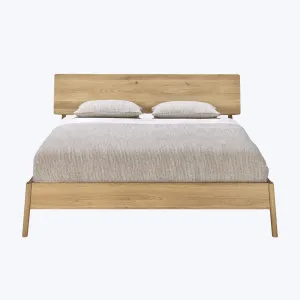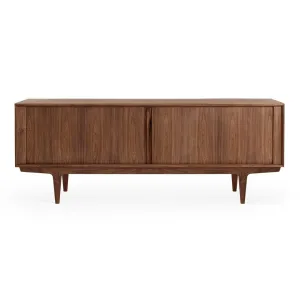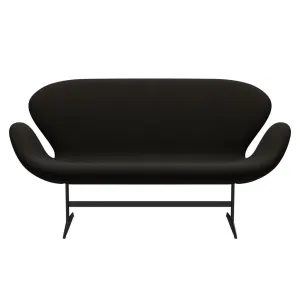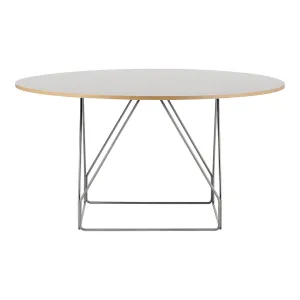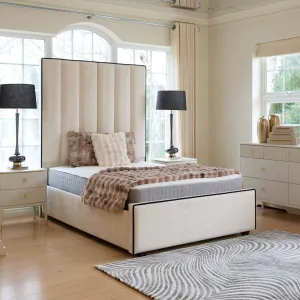The Tearoom Sofa with High Back from Audo Copenhagen (formerly Menu) transforms Nick Ross's celebrated design into an architectural sanctuary that creates intimate space within open environments. The extended backrest provides both acoustic dampening and visual privacy, establishing a micro-environment perfect for focused work, quiet conversation, or contemplative moments amidst busy surroundings. This thoughtful enhancement elevates the sofa from beautiful seating to a multifunctional solution that addresses the contemporary need for adaptable, multi-purpose furniture.
The sofa maintains the collection's signature geometric precision and embracing comfort while introducing sophisticated technology integration. The incorporated USB port and power socket at the base represent a seamless marriage of traditional craftsmanship and modern convenience, supporting productive work sessions without compromising aesthetic integrity. BIFMA certified for commercial durability, this sofa acknowledges the reality of contemporary living patterns, where furniture must adapt to our increasingly connected lifestyle.
The construction showcases Audo Copenhagen's commitment to material excellence and engineering precision. The natural wooden base creates a beautiful counterpoint to the upholstered elements, adding visual warmth and textural interest. The foam-filled interior delivers exceptional comfort for extended sitting, while the precisely tailored upholstery—available in a range of premium textiles—completes the sofa's refined expression and contributes to its acoustic properties, creating a cocoon-like experience within open spaces.
Ideal for open-plan offices seeking to create zones of collaboration, hotel lobbies offering discrete meeting areas, residential settings that must accommodate both social gathering and focused work, or co-working environments requiring flexible seating solutions, the Tearoom Sofa with High Back represents thoughtful design innovation. This piece embodies Nick Ross's design philosophy of investigating how objects influence our perceptions and feelings, creating furniture that subtly shapes our experience of space through both visual presence and functional enhancement.




